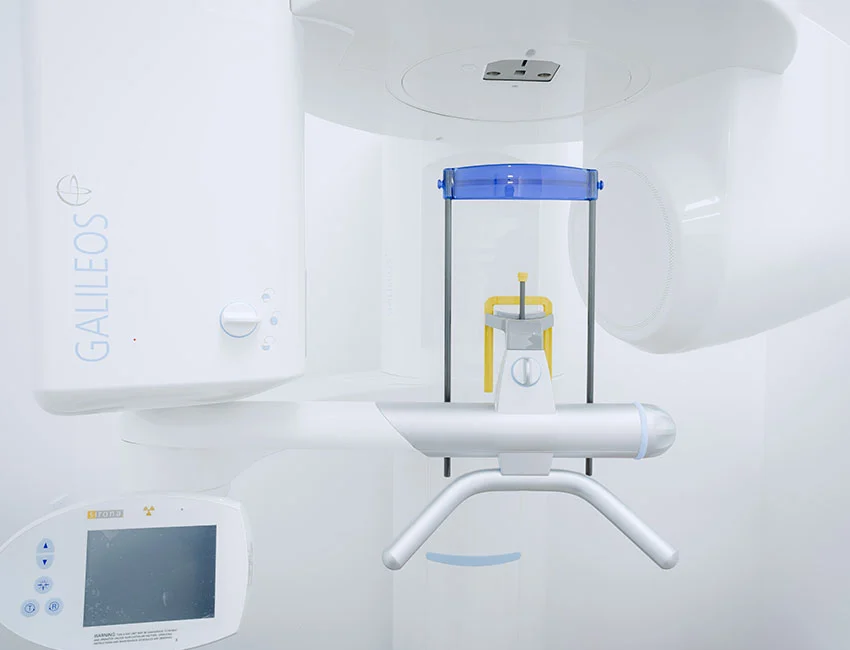Dental Technology at Parsa Dental
At Parsa Dental, our Sun Valley dentist is committed to using the latest dental technology to provide our patients with the highest level of care possible. We believe that incorporating advanced technology into our practice allows us to more accurately diagnose and treat dental issues, and to provide a comfortable experience for our patients. From digital x-rays and intraoral scanners to laser technology and cone beam CT scans, we use a range of advanced tools and techniques to help us achieve the best possible outcomes for our patients.

Benefits of Dental Technology
- More accurate care
- Reduced treatment times
- Gentler for patients
- Minimally-invasive
- Digitally mapped procedures
Digital X-rays
Digital X-rays are now preferred as the gold standard of care for a number of reasons. One of the main benefits of digital x-rays is that digital x-rays produce a clear, high-resolution image, allowing the dentist to more accurately diagnose and treat any issues that may be present.
Because the xrays are captured digitally, it is easier for patients to view them on a monitor alongside our Sun Valley dentist, playing a key role in co-planning and co-diagnosing their care needs.
In addition, digital x-rays emit a much lower dose of radiation compared to traditional film x-rays, making them a safer option for our patients. Some of the most common types of digital dental x-rays we use include:
- Bitewings
- Panoramic or CBCT
- Periapical
- Full mouth (FMX)
Each type of x-ray is used for its own unique purposes, so the type of x-rays you need may be different from one visit to the next.
Intraoral Scanners
Intraoral scanners are a modern technology that eliminates the need for messy dental impressions by capturing a 3D virtual model of your teeth. These scanners use lasers and cameras to create an accurate and detailed digital model of the teeth and surrounding structures.
One of the main benefits of using an intraoral scanner is that it eliminates the need for traditional dental impressions, which can be uncomfortable and unpleasant for some patients. With an intraoral scanner, there is no need to bite down on gooey impression material, which can be difficult for patients with a strong gag reflex or who have difficulty keeping their mouths open for long periods of time.
Intraoral scanners also produce a more accurate and detailed model of the teeth and mouth compared to traditional impressions. These 3D digital models can be easily stored and accessed electronically, making them beneficial during treatments involving clear aligner orthodontics, custom dental crowns, and similar procedures.
Laser Dentistry
Dentists use laser technology in a variety of different ways in their office. Some of the most common uses of lasers in dentistry include procedures like:
Soft tissue surgery: Lasers can be used to perform a variety of soft tissue surgical procedures, such as gum reshaping, gum disease treatment, tongue and lip ties, crown lengthening, and the removal of overgrown tissue. Laser surgery is generally less painful and has a faster recovery time compared to traditional oral surgery.
Rather than using surgical techniques, lasers allow us to gently reshape soft tissues without any incisions. As a result, the procedure is extremely accurate, with less redness, post-operative bleeding, and little to no inflammation afterward. In fact, it’s safe enough that lasers can be used to treat tongue and lip ties in infants and young children.
Gum recontouring is excellent for anyone with a “gummy” smile or uneven gumlines, providing immediate results to complement their other cosmetic dental procedures.
Tooth preparation and drill-free fillings: Lasers can be used to prepare teeth for fillings, crowns, and other restorations. They can remove decay and shape the tooth with greater precision and less discomfort compared to traditional drilling. Numbing may not even be necessary during the appointment.
Teeth whitening: Some dental offices offer in-office teeth whitening, which uses a special type of light to activate a bleaching agent and speed up the whitening process.
Biopsies: Lasers can be used to perform soft tissue biopsies, which involve taking a small tissue sample for laboratory testing. Lasers are highly beneficial because they reduce the need for incisions and, thereby, any swelling or bleeding after the procedure. This speeds up the healing process and eliminates the need for sutures or lengthy recovery times
3D Conebeam/CBCT Scanners
Conebeam computed tomography (CBCT) scans are an important tool in modern dental care, providing detailed and accurate 3D images that can be helpful for a variety of dental procedures. The equipment allows our Sun Valley dentist to produce 3D images of the patient’s teeth, jaws, airway, and surrounding structures. These images provide a detailed and accurate view of the mouth and are helpful for a variety of dental procedures, such as:
- Assessing wisdom teeth
- Planning dental implant placement
- Orthodontic evaluations
- Full mouth reconstruction
- Sleep apnea screening
One of the main benefits of CBCT scanning is that it allows dentists to get a comprehensive understanding of a patient’s oral anatomy. This can be especially helpful for complex cases where traditional 2D x-rays may not provide enough information. For example, CBCT scans can be used to plan for dental implants, evaluate the position of teeth and roots, and even identify issues with the temporomandibular joint (TMJ).
Experience the Difference
Parsa Dental utilizes the best technology for our patients because it allows us to provide safe, quality, efficient care for all ages. Not only does our technology help us provide minimally-invasive procedures and a gentler experience, but it could also help reduce the need for additional therapies in the future.
To learn more about how state-of-the-art care can change your outlook on your next trip to the dentist. Call our Sun Valley dentist today to reserve your next appointment.
